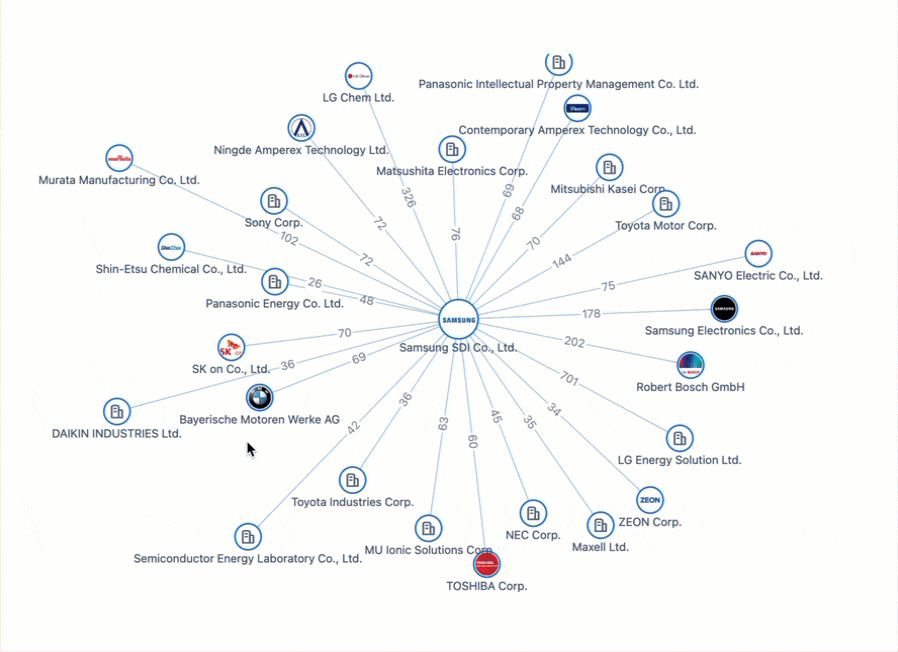How to Build a Superstar R&D Team, VP of R&D at Medtronic Speaks
Every innovative company wants its inventions to lead the pack (and market). But to get there, you need to build an R&D team with the right balance of skills and aptitudes. According to the VP of Innovation and R&D collaboration at Thermo Fisher Scientific, “one of the biggest challenges in coming up with next generation technology is finding the right talent to do so.”
PatSnap sat down with Cliff Emmons, Founder of Accelerated Healthcare Innovations LLC and former VP of R&D at Medtronic, to discuss how to build a superstar R&D team.
According to Cliff, there are three things R&D leaders must do to build a strong team:
- Restructure R&D or hire new talent depending on the type of project being undertaken
- Foster a more welcoming and adaptive culture
- Cure the “not invented here” (NIH) syndrome
Restructure R&D according to the project
You must first determine which type of projects you want to carry out. If you’re carrying out incremental innovation, you may not need to outsource R&D or hire new talent. But if you’re carrying out disruptive innovation, hiring new blood may help. According to Cliff, “A life cycle management team that is focused on trying to keep a successful product line up and running, for an extended number of years, needs a much different structure than an R&D group that is bringing a disruptive technology to market.”
This doesn’t mean you should only hire fresh blood for a new disruptive project—a balance needs to be struck between hiring new talent, and repurposing current talent. According to Centre of expertise Vinci, “…a successful R&D strategy combines in-house and outsourced R&D projects…to implement a successful R&D strategy, companies can build a strong in-house R&D system while making sure their innovation processes do not only feed upon in-house born ideas.”
Combining talent, by reassigning current employees and hiring new employees, is a beneficial approach. Current employees can bring their experience and knowledge of working in the company, and new talent can bring different skillsets which foster new ideas.
Cliff explains,
“You can create an R&D team in a combination of two ways. One way is to reassign people within the current organisation. When you’re talking about a company like Medtronic, which has over 6000 scientists and engineers, you’re crazy if you’re not looking within that talent group to first determine if the right talent exists. The other philosophy is, ‘We don’t have any expertise in this area, so were going to need to go out and get people that are focused on a particular technology.’
“You need to find the best people from within the organisation, that can help you create an anchor and get the historical perspective you want, but then balance it by bringing in new people that become part of the full-time team and can really help with disruptive efforts.”
Foster a more welcoming and adaptive culture
When building a strong R&D team, hiring people that fit into the company culture is as important as hiring people with the right skills. Forbes explains, “It’s easier to teach a new hire something technical than it is to teach them to be a team player and fit in your culture.”
Although cultural fit is key for localised R&D teams, it’s trickier with international teams—in such cases, you should adapt to and respect others’ cultures.
According to Cliff, “The number one reason companies fail going into international markets is they don’t have a strong grip on the culture. [They] try to impose western philosophies about resources and [the] organisation of those resources, thinking that it will definitely play into an international community where there is not the same level of norms. That’s where people usually stumble.”
For example, academic research suggests that if you’re managing R&D teams in China, you need to keep up with the fast development there. Westerners spend more time on analysis and follow a structured process, whereas Chinese professionals are often flexible, open to opportunities and focused on launching before competitors. Adapting to international cultures can help build trust within an R&D team and make it stronger.
Cliff explains, “I’ve had the challenges, in that I was trying to impose on the group my vision of how they should be organised—as opposed to being sensitive to how the culture believes it should be organised, and finding an area of trust and then building on that… help[ing] those layers of organisation and leadership transform themselves in an appropriate way, that gets you to the end goal.”
Cure the NIH syndrome
The not invented here (NIH) syndrome refers to a resistance in companies towards ideas developed externally, for example by competitors, suppliers, customers and universities. Having this mentality hamstrings R&D teams because they fail to exploit externally generated ideas—even when these ideas are great. Research shows that external technical knowledge can complement in-house R&D by shortening development times, enabling synergies and generating efficiency effects, overcoming path dependencies and triggering new technology developments.
Furthermore, Cliff explains how having an NIH mentality holds back R&D teams, “You sometimes hear the phrase NIH, ‘Not Invented Here’… it creates this inefficiency in innovation where one of two things happens—and one happens more often than the other. That idea on the outside, in a small team, may make it through the valley of death in a small start-up and go on to become commercialised—and possibly successful—but that’s rare and takes time.
“And companies think that ‘It only took us two years to acquire this technology, we should always acquire companies!’ Instead of realising that if they look at how long it took for that [external] company to go from the day of the first idea to the day of commercialisation, it’s as long, if not longer than any internal program they have had as a company.
“If they had integrated that idea and that base intellectual property into their business and R&D groups earlier, how much faster could they have brought that product to market?”
By allowing employees to research external technologies, you can empower them to build on existing breakthroughs and accelerate R&D.
About Cliff Emmons
Cliff is the Founder of Accelerated Healthcare Innovations and the former VP of R&D at Medtronic. He has extensive experience in creating, building, and transforming R&D organisations in the USA, India, and China at a Fortune 500 company with over 200 engineers.
Find more: Cliff Emmons on LinkedIn | AcceleratedHealthcareInnovations.com
Your recommended content
-

All Charged Up: Power Batteries & The Patent Race Shaping the Future of Electric Mobility
Category: Article | Category: battery technology | Category: electric vehicle | Category: EV | Category: lithium ion | Category: lithium ion battery | Category: NEV | Category: new energy vehicles
Monday, April 22, 2024
In the ever-evolving landscape of innovation, the electric vehicle (EV) industry stands as a beacon of technological transformation. As nations...
-

The People vs. AI: Who Owns Ideas in the Era of Generative Artificial Intelligence?
Category: AI era | Category: AI-driven creativity | Category: AI-generated creations | Category: Article | Category: copyright and patent rights | Category: digital innovation | Category: innovation | Category: intellectual property law | Category: legal implications | Category: OpenAI Sora | Category: patent law | Category: Research Tag | Category: Sora | Category: text-to-video generative AI | Category: who owns AI
Monday, April 22, 2024
In the ever-evolving landscape of technological innovation, OpenAI's Sora emerges as a groundbreaking force, blurring the lines between human creativity and artificial intelligence. As the forefront of text-to-video generative AI, Sora's capabilities have ignited profound discussions around copyright and patent rights, challenging established legal frameworks and prompting a reevaluation of intellectual property rights in the digital age. With its capacity to generate high-quality footage based on mere prompts, Sora exemplifies the potential of AI-driven creativity, yet it also raises complex ownership dilemmas and ethical considerations. As we navigate this uncharted territory, it becomes imperative to explore the intersection of intellectual property law and AI technology, deciphering the legal challenges and implications posed by AI-generated creations. From the nuances of copyright law to the ethical dimensions of AI development, this editorial delves into the multifaceted landscape of Sora's impact, offering insights into the future of innovation and ownership in the AI era.
-

Patsnap Releases 2023 Global Innovation Report: The Brilliant Names to the Dynamic Landscape of Innovation
Category: Article | Category: eBook | Category: Research Tag | Category: Whitepaper
Wednesday, November 15, 2023
The Global Innovation 100 and Global Disruption 50 transcend individual entities, each representing a small innovation ecosystem with numerous subsidiaries. Through the innovation data of these companies, we gain insights into the characteristics, structures, and trends of global innovation.